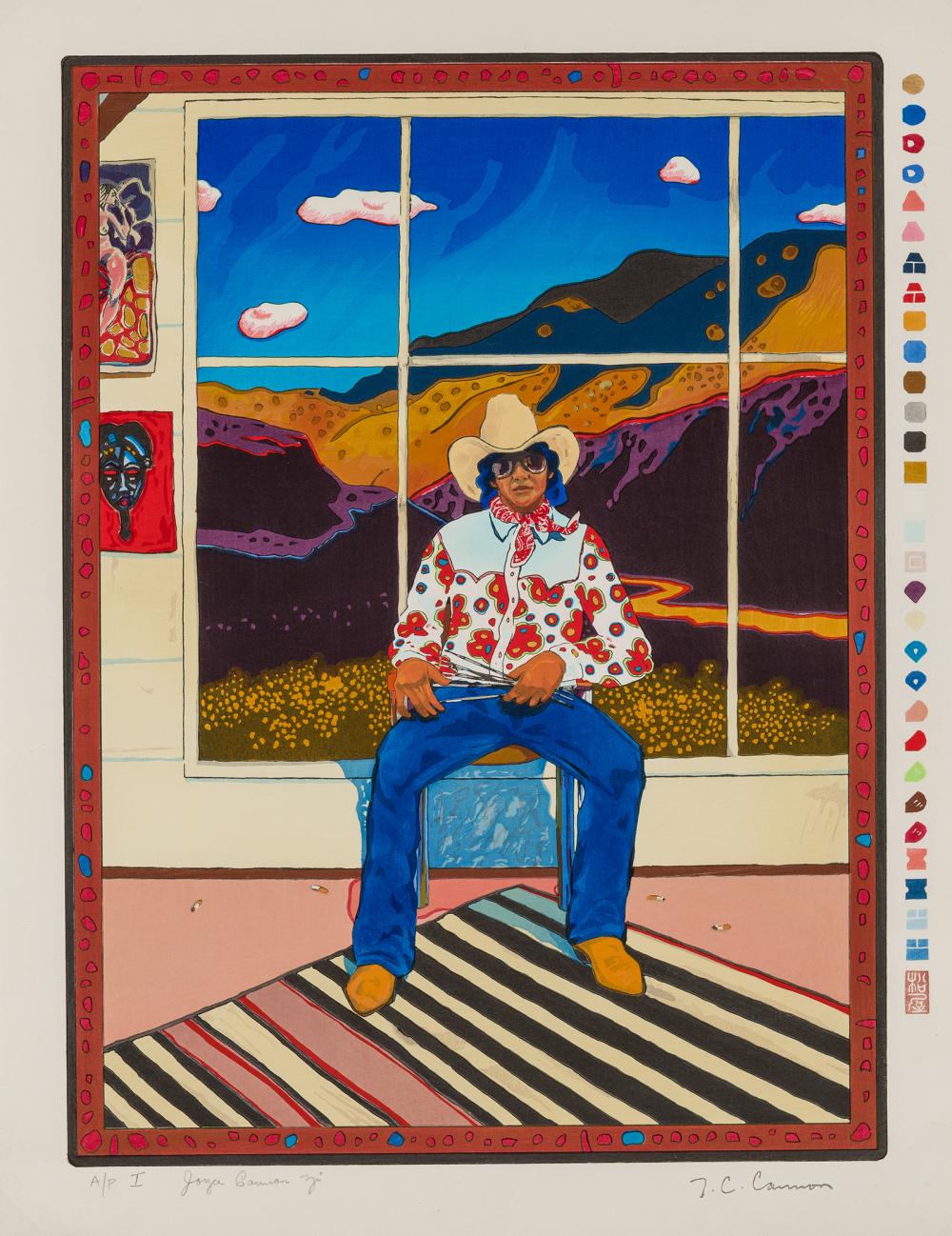(September 27, 1946 – May 8, 1978)
T.C. Cannon was an influential Native American artist, born in Lawton, Oklahoma to Walter Cannon and Minnie Ahdunko Cannon. Born as Tommy Wayne Cannon, he was an enrolled member of the Kiowa Tribe with his father of the Kiowa and mother of the Caddo. Cannon is best known for his impactful dichotomies featuring both Native and non-Native elements. With his bold color choices, he catches your eye by marrying old traditional art styles with the modern world. His sense of humor was often reflected in his contemporary style.
At an early age, Cannon was exposed to the Kiowa Six, a group of Native American painters who achieved international reputations in the fine art world. He enrolled in the Institute of American Indian Arts of Santa Fe in 1964, where he studied under artist Fritz Scholder. After graduating from the Institute of American Indian Arts of Santa Fe, he enrolled in the San Francisco Art Institute, but only stayed for two short months until he enlisted in the army. Cannon was sent to Vietnam from 1967 to 1968 where he served as a paratrooper in the 101st Airborne Division. Even while serving in the military, Cannon still had his foot in the art world. While in Vietnam, his work was included in a traveling exhibit, Contemporary Southern Plains Indian Art. Keeping in contact with his mentor, Fritz Sholder, after Vietnam, he and Scholder had a two man exhibition at the Smithsonian Institution’s National Collection of Fine Arts, titled Two American Painters. Once again in his element, the next several years were spent producing work for his first one man show which was scheduled to debut October of 1978. Sadly, though, at the young age of 31, Cannon died tragically in an automobile accident in May of 1978, just several months before his show.
His talent, hard work, and dedication did not go unnoticed by the art world. Fifty of his pieces were featured on December 10, 1979 in the show T.C. Cannon: A Memorial Exhibition. The show traveled to locations like Heard Museum, the New Mexico Museum of Art and Buffalo Bill Historical Center. Although short, Cannon’s life experiences influenced much of his work and he continues to be an inspiration to many artists today.
